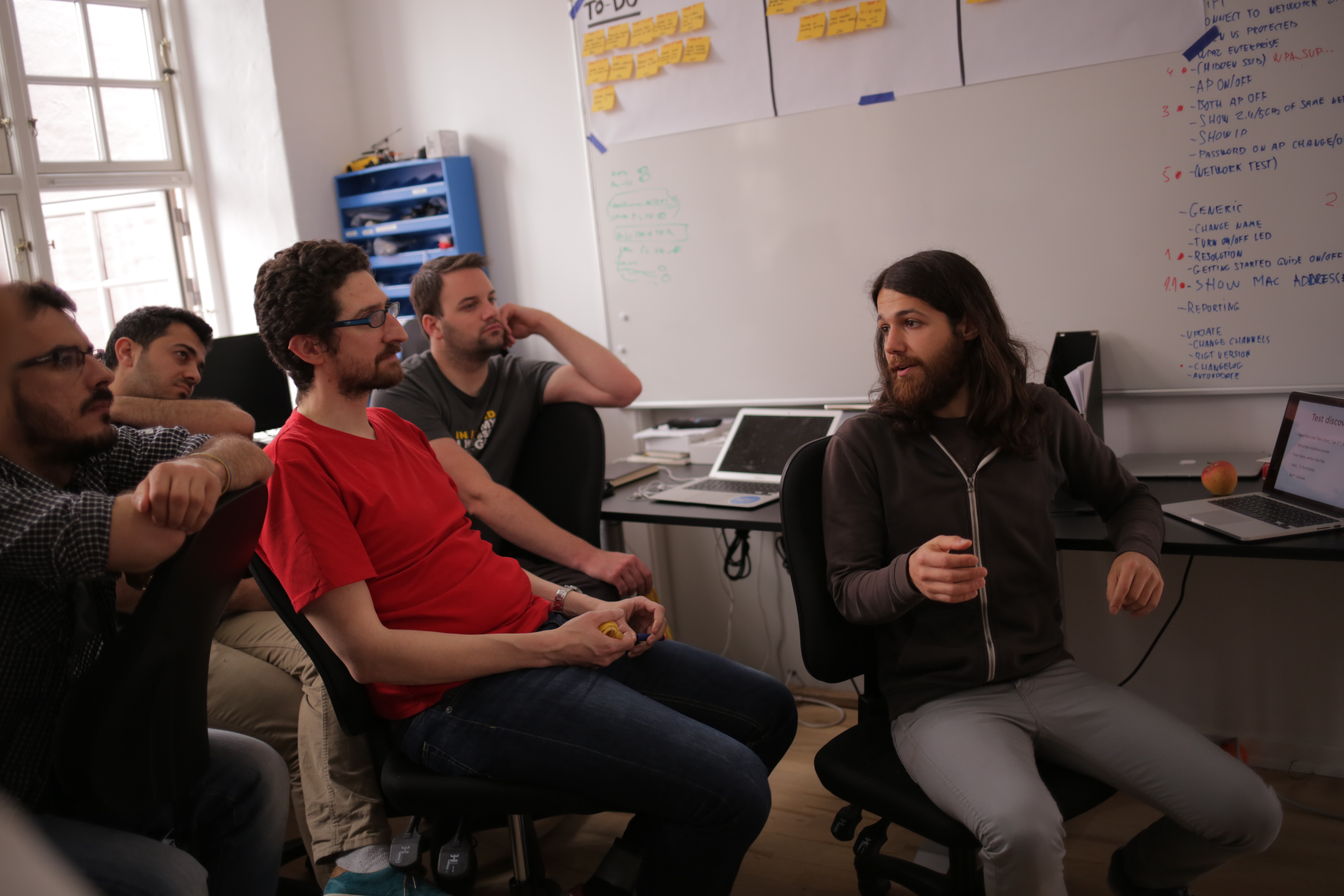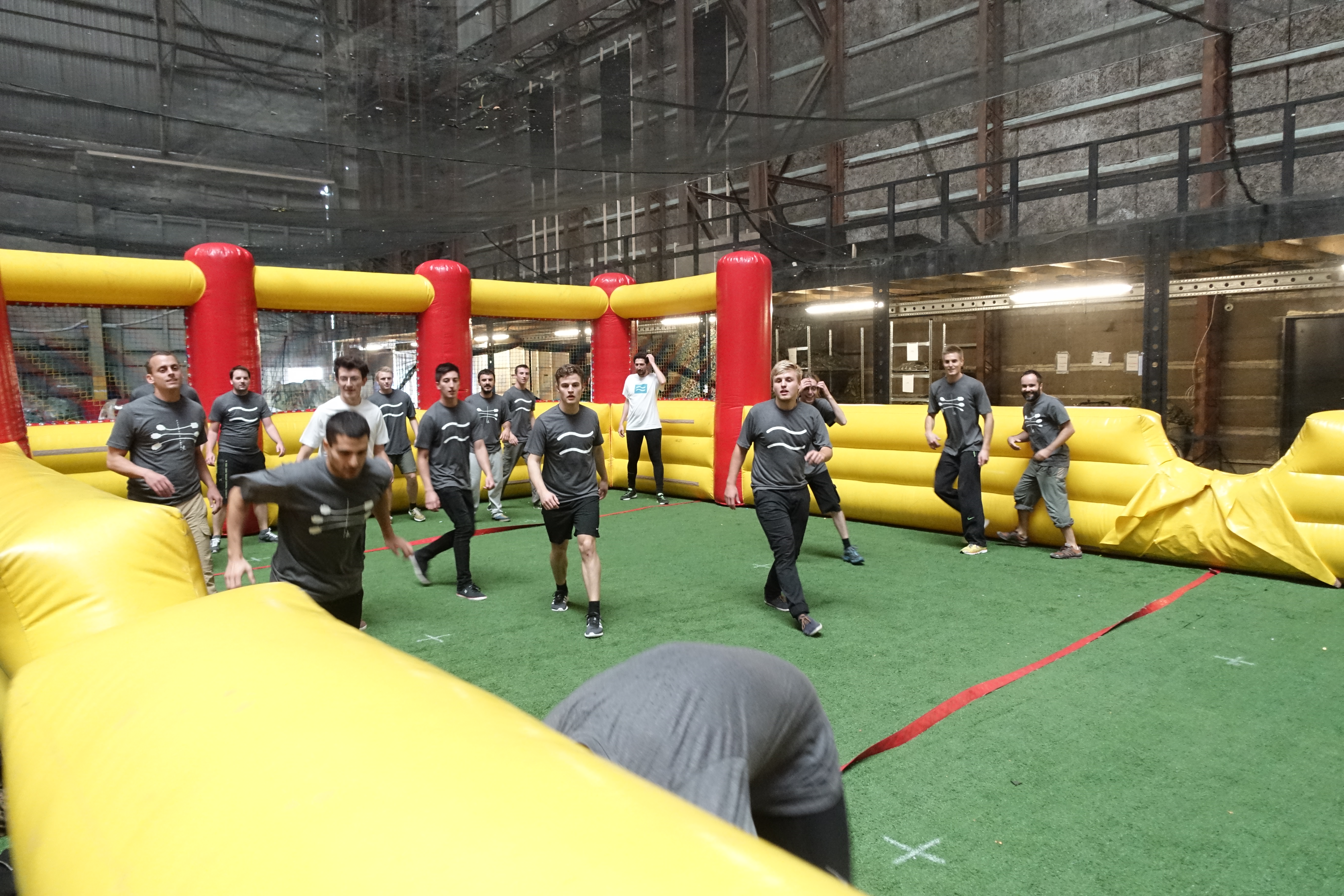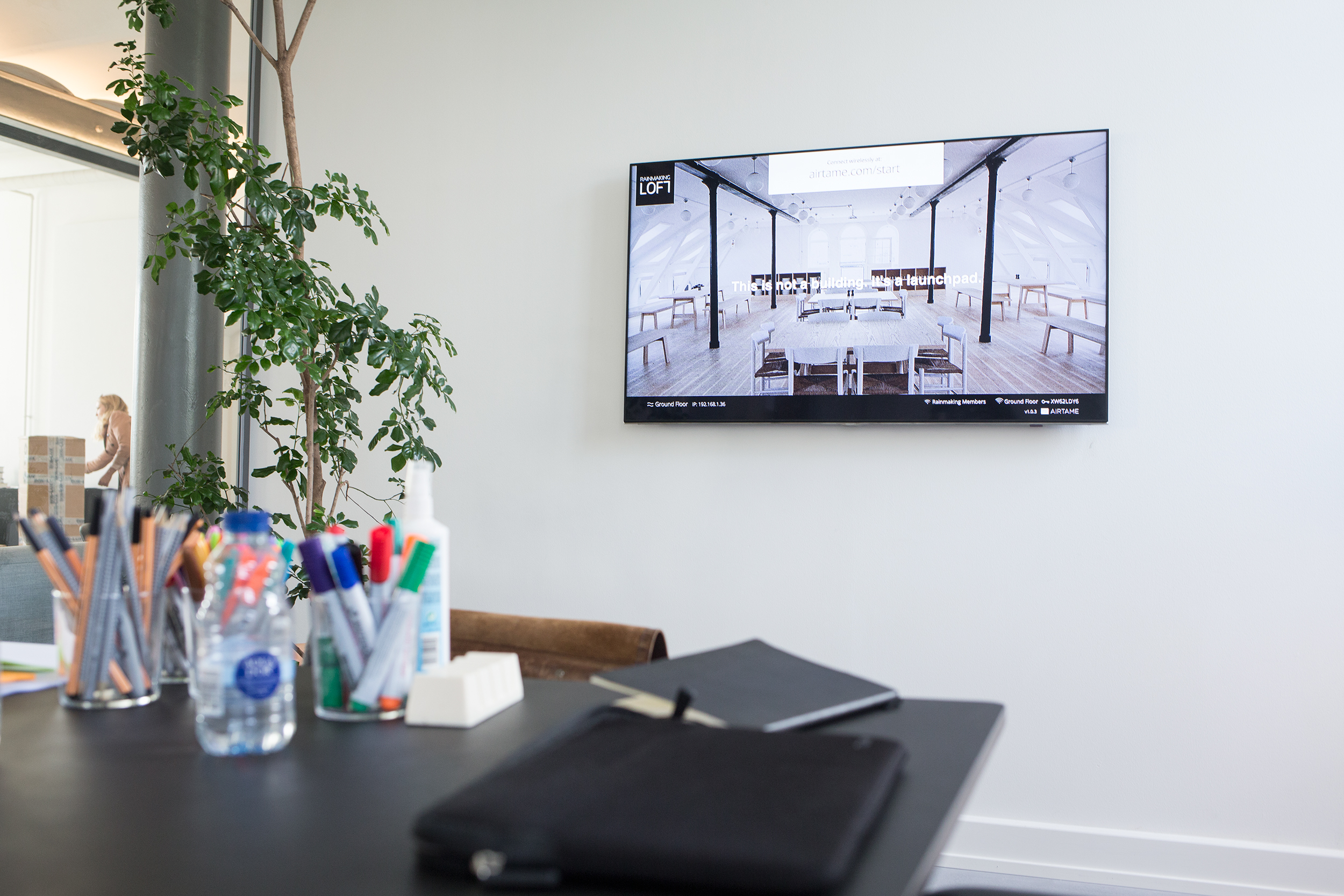This guest blog post was written by Jonas Gyalokay, CEO and co-founder of AIRTAME, a company that wants to rid the world from screen cables and help people to work better – wirelessly.
I recently wrote a post about our learnings when we crowdfunded on Indiegogo back in 2013. It was a stunning experience. It took a crazy amount of work to prepare and run the campaign – and a lot of luck to succeed as well. That being said, running the crowdfunding campaign (and getting funded) is just the beginning of a long and bumpy road to building a company.
This is a post about our learnings on how to overcome the post crowdfunding death valley and move towards market launch.
To set the scene for this post, let me briefly describe how a typical day during the campaign would look like: Wake up, check raised amount on campaign page, reply to people in the comments section, pitch journalists, check raised amount on campaign page, send out an update, pitch journalists, share something on social media, check the raised amount on the campaign page, reply to people in the comments section, check the raised amount on the campaign page, pitch journalists, check the raised amount on the campaign page before you go to bed…. Wake up during the night and check the raised amount on the campaign page. Repeat.
In other words, it was super intense and ultra short-term focused. We kept asking ourselves, What could be done today and right now while the campaign is still live?
1. You just got funded – Now what?
The first thing that hits you after your campaign has ended is that suddenly you need to think a bit more long term. Instead of planning in hours and days, you need to start planning in weeks and months. And then you revisit the delivery plan you made before you started your campaign and discover – it’s pretty useless.
Things can change so much (in our case mainly because of scale) and the extent of the whole thing can look completely different. So, the first thing you realise is: Your delivery plan needs to be rewritten.
In our case, we had to upgrade the hardware so much that we had to start over and design the whole thing from scratch again.
We needed to find a new manufacturing partner that could actually handle the now bigger initial order (finding the right manufacturer is a looong process, but more on that in another post). Then there’s the software development, which is an extremely big part of our product as well – even more than the hardware. When trying to break completely new technological grounds, software development is bound to be filled with a lot of unknowns and delays. You start to realise that the initial promised shipping deadline was very optimistic. Still, you tell that little voice in your head to shut up. You promised yourself that you wouldn’t be one of the projects delivering way too late. Not us, we’re well-prepared and have things under control. We’re different from the others that can’t estimate sh*t. Well, not so much..
The challenge you are now facing is that you’re used to communicating positive things to your funders/backers (product updates, press coverage, awards, etc.). Obviously, you would prefer to continue down that positive road. The unavoidable truth though, is that you are a little too close to the delivery date. You have to send out the ‘Shift in shipment’ announcement, and reality hits you like a right hook jab from Ali.
Key learning: Schedule some serious buffers in your delivery plan! (I read at least 10 posts stating this before we launched and we didn’t really listen. I don’t know if it helps that I’m now saying it for the 11th time, but please listen first-time crowdfunder: put some serious buffer in your schedule! You’ll thank yourself later).
Give yourself enough time to build an awesome product after your crowdfunding campaign has ended. All the unknown elements will mess up your schedule. We believed that we needed to (over-)promise an early delivery date, or else people wouldn’t preorder. Of course, it would hurt your campaign if you said that you wouldn’t be able to deliver until three years later, but I’ll take a realistic delivery schedule over an ambitious one that fails to deliver (and therefore creates unhappy funders), any day. No more over-promising! We learned that the hard way. It sucks to feel one (or more) step behind. It sucks to not live up to your crowdfunding word, and people that contributed to your campaign don’t deserve it.
2. What, where and whom should you focus on?
In our case, part of rewriting the delivery plan was also to take a good hard look at what we could build and for whom, with the limited time and resources that we had.
When we initially presented our prototype and vision for the company, we used the analogy that the physical HDMI cable in some way was context independent. It was the same product no matter if it was sitting in the living room, a meeting room, or at a school. Since we’re basically doing the same as a HDMI cable, just wirelessly, we thought we could be context agnostic as well. We did the rookie mistake of focusing on ‘everyone’ and ‘everything’.
But context matters, we soon learned.
We were quickly faced with millions of small product tradeoffs. We needed to narrow our focus to only one segment. Ultimately, we had to choose between the two main groups that had both contributed to our crowdfunding campaign: consumers (that wanted to stream TV shows at home) and businesses (that wanted to stream wirelessly in meetings). We based our decision on three main factors: The market, feedback from customers, and our own motivation for building a product like this.
- If we start with the market, the wireless HDMI streaming market was at the time (and still is) divided into two overall categories: 1) consumer devices that tried to reinvent the TV experience, helping consumers watch more television, wirelessly. 2) enterprise solutions with decent features, but that, in our opinion, were too expensive and not easy to use. And all of the above also lacked cross platform compatibility. A de facto standard that welcomed all brands. Additionally, we saw, that in the consumer category we would have huge competition from giant corporations. They could crush us with better content/media deals, something we realised we probably never would be able to compete with. However, in the enterprise category, this would not be the case.
- Then there was the feedback from our customers. To our big surprise, around 25% of our Indiegogo funders were businesses. Pretty huge, given the consumer-focused nature of crowdfunding platforms. But companies of all sizes decided to pre-order one or multiple AIRTAMEs with comments like, “It’s the solution the enterprise market has been seeking for the last three years.” Clearly there was something going on here.
- The last thing was our own motivation. When we thought long and hard about which product we really wanted to build and use ourselves, it was pretty clear: we wanted to help people collaborate better and be more productive, cutting their cables. Not helping people watch more television. So we made the decision…
In a way, we needed to “turn our back” against the larger part of the people who had supported us in the beginning in order to survive. You cannot imagine how tough a decision this was. Focus is extremely hard, because optimally, you would like to make everyone happy. But it’s one of the best things we have ever done. It’s why we’re here today and are on the right track to build something great. A real, sustainable technology company.
Key learning: Focus on what’s important and be bold enough to cut away everything else that distracts you. In our case, it was a choice between b2c and b2b. It could be a lot of other things as well. You’ll not survive if you try to do and be everything for everyone.
Hopefully, you don’t have to make such a wide pivot as we did, but you should be prepared for it. If not right after your crowdfunding campaign, then at some later point when inevitable surprising things happen.
3. How do you scale your team up?
Okay, so at this point we had just realised that we would be delayed and that we couldn’t deliver on everything we had promised. It goes without saying, that you now feel extremely restless, wanting things to happen quicker. But do not panic. Do not take rushed decisions. Your judgement is clouded. Stay calm, think it through, and then move forward.
The first thing you want to do is scale your team up – fast. How hard can that be? You have funding, so now it’s just finding people quickly and get them onboarded as fast as humanly possible, right? No.
Hiring people (especially the wrong people) too fast can and will kill you.
Yes, you need to deliver on your promise, but you’re building a business here – a business that needs to implement its own unique winning culture as it grows and the best way to do that is to hire great people.. We have learned this the hard way. ‘Hire slow, fire fast’ the saying goes, and there is something to it. You will feel like it is not possible, because you’re (already) out of time. But, trust me, the reality is that you’ll always feel you’re out of time. The solution is definitely not to compromise on the quality of the people you sign up. It’s the opposite. Never compromise. Try only to get the best people to work with you towards your mission.
Key learning: Never take shortcuts when it comes to hiring. It’s never the right solution.
4. When the going gets tough, who has the will to continue?
Okay, so here’s the next challenge: Building great products is extremely difficult. Big surprise, right? No, not really. But you don’t really feel it until you live it.
Hardware is hard, software can sometimes sucks, wireless is worrying, and cross platform is a crazy pickle. But who cares? You need to deliver.
It is exhausting and definitely not for the faint-hearted.
Our approach towards building the software and hardware of the AIRTAME is all about people, the right people. The right people are: skilled individuals who make the entire team better , who fit the culture,who are equally ambitious, who are creative. And, last, but certainly not least, people who are fun to work with.
Of course, experience helps, however I think a lot of crowdfunding campaigns are run by first-time and/or young founders. You will be in a situation where you don’t have the money to pay for experience and talent, and you often have to go with ‘just’ talent. And I would take that trade-off any day. If you’re on a strict budget (which you always should be when starting a company), my recommendation would be going with talent over experience.
Key learning: The goal should always be to build something great. And for that you almost always needs more time than expected, great people, and a strict focus. Make sure you take some time to enjoy and appreciate the process and journey you’re on. It is hard, rough and exhausting, but it’s one of the best things in the world.
5. Stand tall, work hard, and keep improving your product
You’re hoping everything will come together and you can send this rocket off when you launch. You hope for the best. But to my experience that’s almost never the case with crowdfunding campaigns. Expectations are simply too high. That is reality. Crowdfunding is awesome, but it’s also promising a lot, and that’s always hard to live up to.
Seriously, I would like to travel around and physically hug everyone that supported our Indiegogo project. It means so incredibly much to us that they did this.
Since that would take a lot of time and probably use up all our funds, the only thing we can do is focus on improving our product. And additionally, share our experiences and learnings along the way to help the next wave do better. At least that’s what we decided to do.
Hitting the market is fantastic, but just as crowdfunding and delivery are two totally different animals, so is being on the market. We’ll share our learnings on that later.
Ready to start your own million dollar campaign? Fill out this form and we’ll help you get started!








GREETING……. I must say Dr. Obasi spell really worked and I am proud to testify also. I saw a post on how a lady got her ex boyfriend back through the help of Dr. Obasi spell and I decided to try him because my marriage was crashing and my wife was asking for a divorce. Dr. Obasi helped me and my marriage is now perfect just as he promised my wife now treats me like a prince even when she had told me before he doesn’t love me anymore. well, I can not say much but if you are passing through difficulties in your relationship or marriage, contact Dr. Obasi today via obasispelltemple@gmail.com